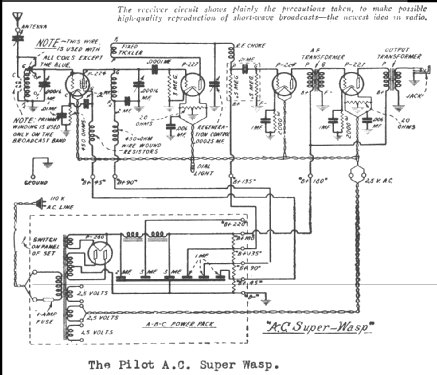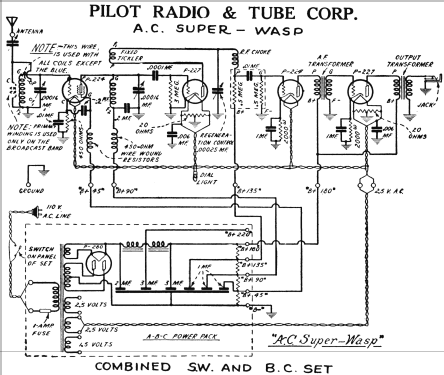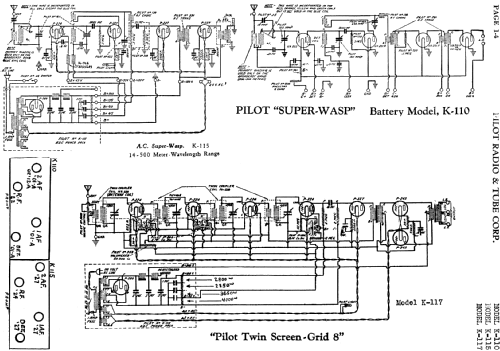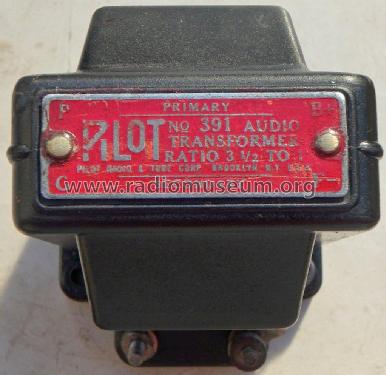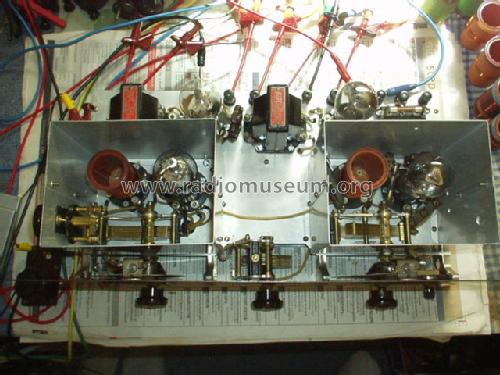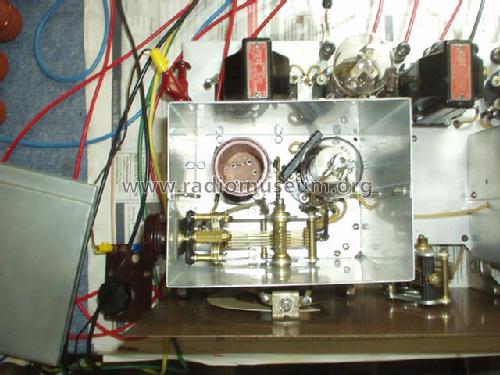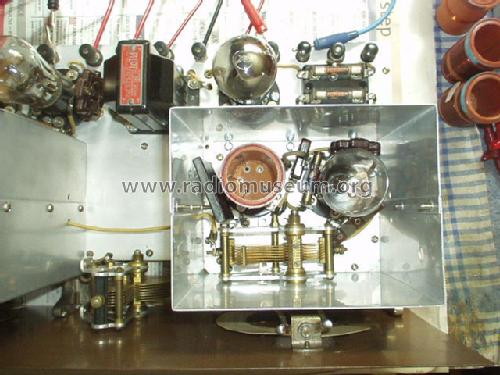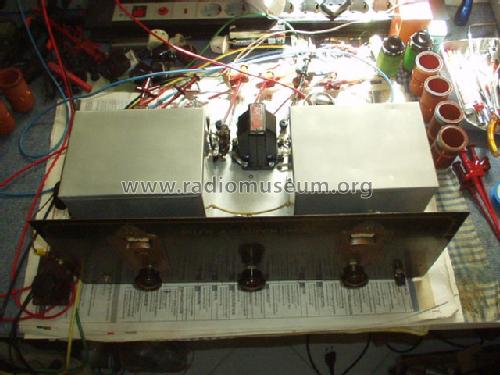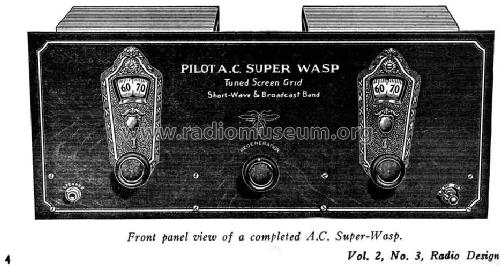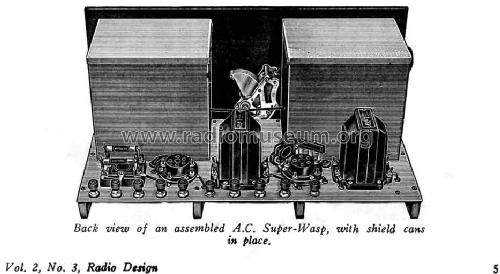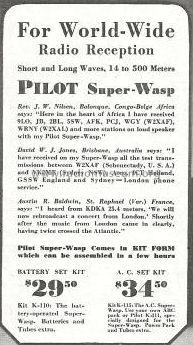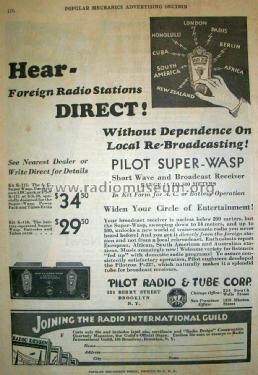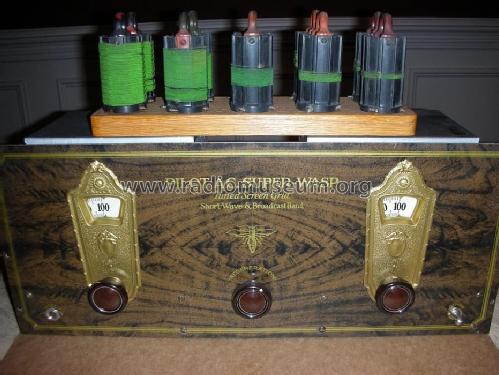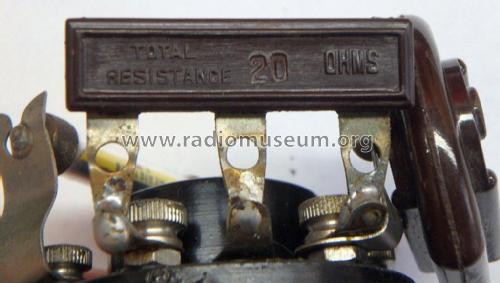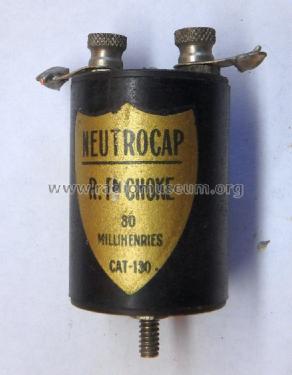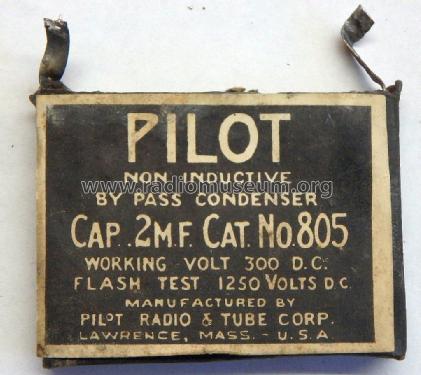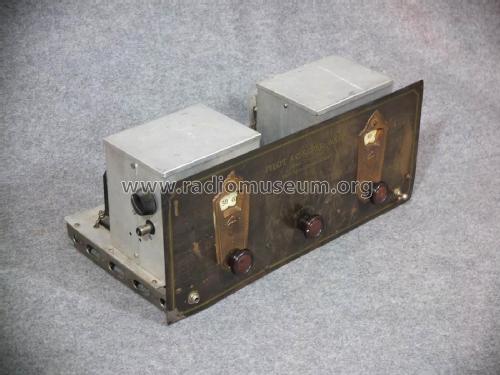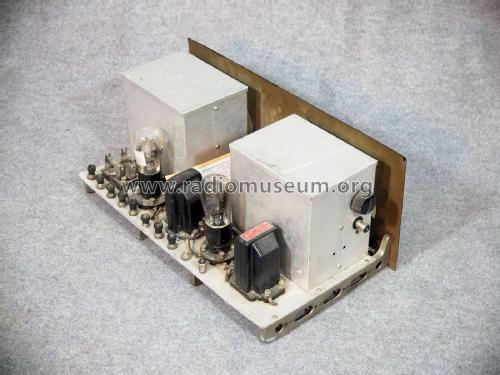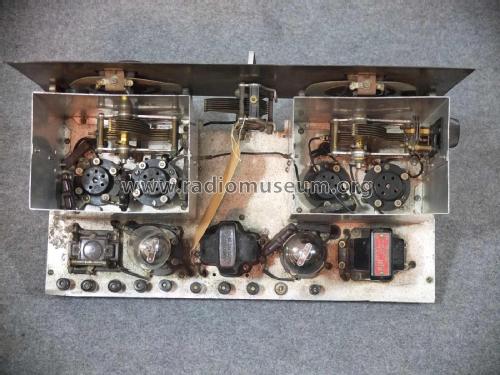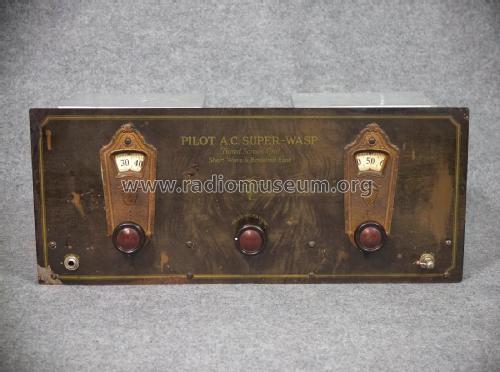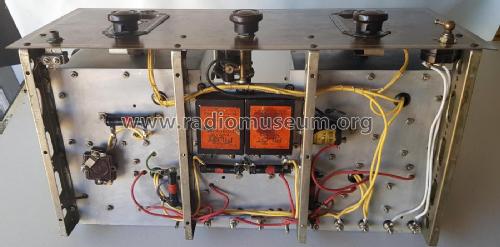A.C. Super-Wasp K-115
Pilot Electric Mfg. Co. (Radio Corp.); Brooklyn (NY)
- Country
- United States of America (USA)
- Manufacturer / Brand
- Pilot Electric Mfg. Co. (Radio Corp.); Brooklyn (NY)
- Year
- 1929
- Category
- Broadcast Receiver - or past WW2 Tuner
- Radiomuseum.org ID
- 52004
-
- alternative name: Pilot Radio & Television || Pilot Radio and Tube || Pilot Radio Corporation
Click on the schematic thumbnail to request the schematic as a free document.
- Number of Tubes
- 4
- Main principle
- TRF with regeneration; Screengrid 1926-1935
- Wave bands
- Broadcast and Short Wave (SW).
- Power type and voltage
- Alternating Current supply (AC)
- Loudspeaker
- - For headphones or amp.
- Material
- Metal case
- from Radiomuseum.org
- Model: A.C. Super-Wasp K-115 - Pilot Electric Mfg. Co. Radio
- Shape
- Chassis only or for «building in»
- Dimensions (WHD)
- 18 x 7.5 x 9.5 inch / 457 x 191 x 241 mm
- Notes
- Requires ABC Power Pack K111. Price is less Power Pack
David Grimes writes in "Radio Design" about the Pilot A.C. Super-Wasp on page 3 to 15 and 28ff. The Pilot AC Super-Wasp - in this magazine the front plate shows Super Wasp without hyphen - on the photo of Manfred Edelmann you can see with hyphen which might indicate that there are different versions around. The article deals first with the big difficulties to get a hum free "telephone receiver" also for short waves and with regeneration. It shows also the difference between the tubes 227 and Pilotron P-227 and it gives detailled information on the kit.
The AC tetrode UY224 was first announced in April 1929 - and only later followed the 24A. The model with this tubes can not be before 1929 [EE].
- Price in first year of sale
- 34.50 USD
- External source of data
- Ernst Erb
- Source of data
- Collector's Guide to Antique Radios 4. Edition
- Circuit diagram reference
- Rider's Perpetual, Volume 1 = 1931/1934 (for 1919-1931)
- Mentioned in
- Radio Design (Article in Fall Issue 1929: "The first Short-Wave Receiver that Works Successfully on AC)
- Literature/Schematics (1)
- Radio Manufacturers of the 1920's, Vol. 2
- Literature/Schematics (2)
- Radio Broadcast Magazine (October 1929, page 371)
- Other Models
-
Here you find 544 models, 273 with images and 412 with schematics for wireless sets etc. In French: TSF for Télégraphie sans fil.
All listed radios etc. from Pilot Electric Mfg. Co. (Radio Corp.); Brooklyn (NY)
Collections
The model A.C. Super-Wasp is part of the collections of the following members.
Museums
The model A.C. Super-Wasp can be seen in the following museums.
Literature
The model A.C. Super-Wasp is documented in the following literature.
